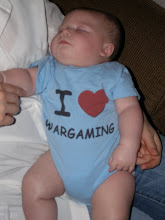
Hey all, I just want to start with a quick rundown of the tools I use.
Dremel bits:
I have the Dremel 400 XPR model.
#106 (1/16”) – Used to widen the hole made by the pin vice so the #191 till slip less. Trust me, I’ve tried to skip this step and sometimes the #191 will slip. For the 1/16” magnets, this one makes a perfect fit.
#191 (1/8” rounded tip) – This is used to bore the hole to the correct depth. This one does the majority of the work.
#194 (1/8” flat tip) – This is the final step It is primarily to flatten out the hole for the magnet to fit. I rock this bit around 360 degrees a little to make the hole slightly larger than 1/8” so the magnet slides in easily with glue on the bottom.
Glues:
Krazy Glue Brush on – I use this for bits I need to tack in place, or some pieces where the brush applicator makes it so much easier. I also use this glue after the pieces are set for a once over to fill in any holes in the pieces and in the case of the magnets, I cover them with a thin layer of glue, it helps keep them from rusting from the water based paints.
Citadel Super Glue – I use this glue any place I need a stronger hold which is most larger pieces on a vehicle and magnets. These magnets are strong so you want a solid hold on them. This gives a little more positioning time than the Krazy Glue.
Other implements of torture…er hobby tools:
Cheapo side cutters – from craft store (green handle)
X-acto knife (not shown) – To do most of the trimming and cutting sprue connection points down.
Small fine tooth file – To smooth down the rough edges and sprue connection points (there must be a name for it, but apparently I skipped that day in geek school)
Pin Vice – A wonderful tool, I use this one a lot, every gun barrel and guide hole I need to make uses this.
Scribing tool aka: awl – This works great for pinpointing the spot I want to make a hole. As I mark, I can adjust the hole until I have it just where I want it, then use that hole as a guide for the pin vice.
Old soft bristle Toothbrush – I use this to clean off the dust and shavings, etc. It works quick and easy.
Sharpie Marker – I use this to mark one side of my magnets so I always have the right polarity. Those sucks flip around so much and with glue on them, they’re sure to instantly bond the wrong side down if you’re not careful. Heh.
Tweezers – A good tool to help position bits with glue so my fingers don’t get instantly attached. Also to hold my magnets as I work with them. I often make several stacks testing the right polarity of magnets, then start marking one side with the Sharpie and as they dry moving the magnets to the other side while I mark up the next set.
Little hunk of thin, wide, clear plastic (not shown) – I use this to hold and position a magnet into place since it doesn’t form a bond as fast as my finger.
Magnets: I get all my magnets from K&J Magnetics. They’ve been very reliable and have incredibly fast shipping.
1/16” x 1/32” – (part #D101-N52) I use this primarily for small bits like hands, pistols or melta bombs and my personal favorite, to attach the long thin bit that sticks out in front of a land speeder. They break off just by looking at them. So I put a couple of these magnets in both sides. It takes some careful centering work, but you can bore a hole inside the shaft. I can post a pic of that if anyone wants to see.
1/8” x 1/16” – (part #D21) – These are the primary magnets. I use them for everything other than some of the larger bits on vehicles. Especially arms to torso, and backpack to torso connections.
1/4" x 1/16” – (part #D41) – I reserve these for holding large and heavy bits like side sponsoons, turrets, and door plates on the sides of chassis.
A lot of people say to use thinner magnets, but I like the stronger hold. I very rarely run into a model that can’t hold these size magnets. I find the thinner magnets do not hold termie arms in position with Thunder hammers and Storm Shields. One caveat, I also use steel paper (or more cheaply steel flashing from the hardware store) on bits that cannot hold a magnet on one side, but the other has more space. For example, a banner pole on top of a backpack. Or on the thin Ironclad Assault Launcher plates for an Ironclad dreadnought.


